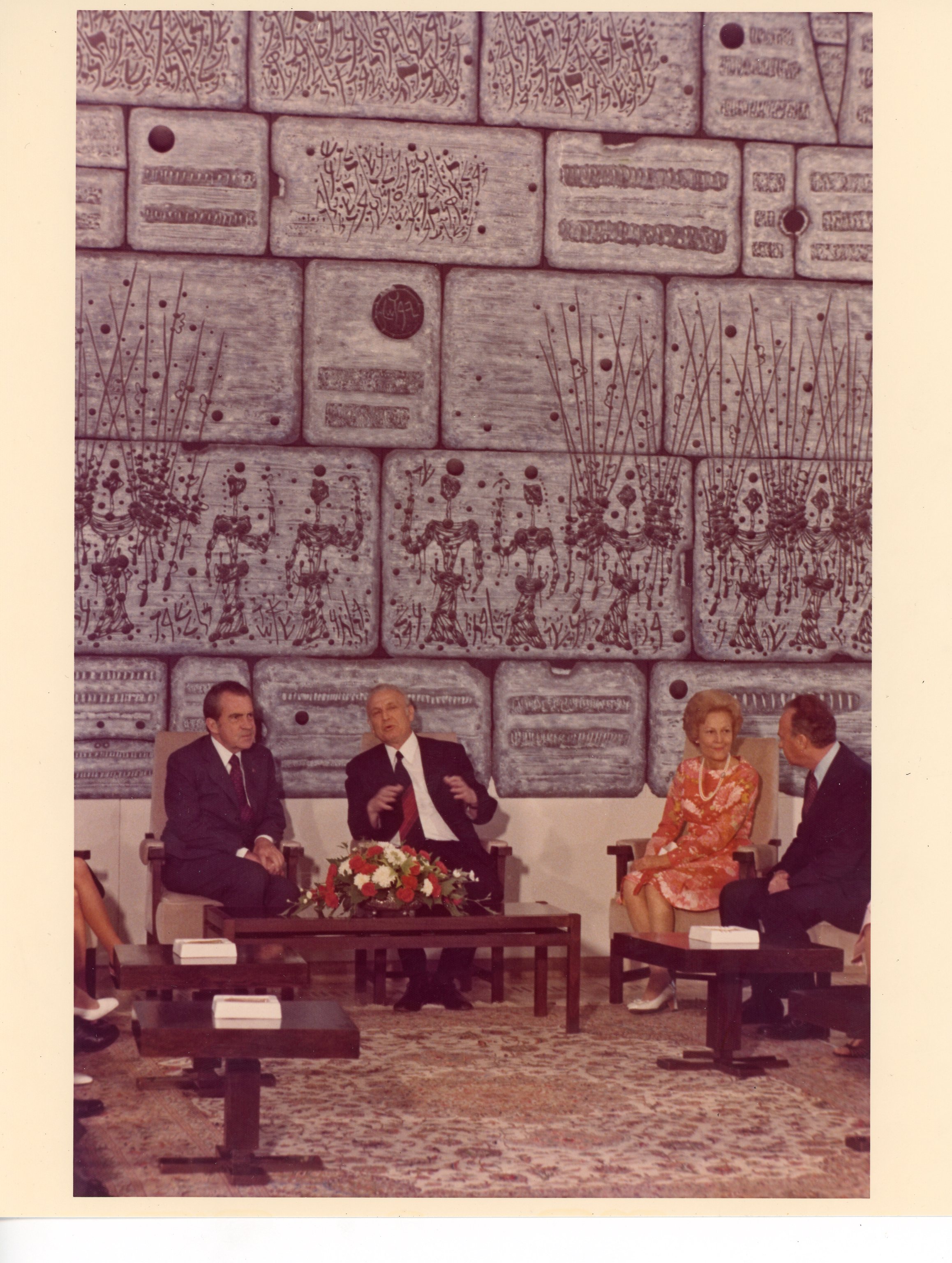By Jason Schwartz
After several weeks of fighting in October 1973 between Israel and the adjacent Arab nations, the Yom Kippur War had reached conditions which threatened further escalation. Each side had respectively been resupplied by their ideological benefactor-with Israel siding with the United States and Arabs with the Soviet Union. While initially facing the threat of losing territory acquired during the Six Day War 1967 in the initial days of combat, the subsequent fighting allowed Israel to regain and even expand the territory which it controlled. The Arab nations had created a much stronger negotiation position than in past conflicts due to their early strong military showing and united response.
For the Nixon administration, the outcome of the war had to equally account for the need to bolster a longtime ally while also simultaneously taking into account regional aspirations of improved relations with those nations historically hostile to Israel. Taking effect by the adoption of measures largely negotiated by the United States and Soviet Union, UN Security Council Resolutions 338 and 339 prohibited all further military activity. In addition, the resolution mandated a return to the territorial boundaries of 22 October. The American response demanded a calculation of the contrasting but equally important objectives of securing a strong alliance with Israel which also furthered regional stability. Though the Israeli Defense Forces had advanced and carved a path towards Cairo unopposed, the United States used leverage gained through its massive resupply efforts to effectively halt further advancement. Seeing a reasonable negotiation partner in Egyptian President Anwar Sadat, American policymakers wanted to avoid any conclusion that may cause embarrassment or threaten the future legitimacy of Sadat’s rule in the eyes of the Arab world.
In preparation of meeting with Israeli Prime Minister Golda Meir, an NSC memorandum addressed to Henry Kissinger outlined the need to restrain Israel’s military gains against the larger geopolitical picture:
If this war has demonstrated that Israel needs US support and could lead to a US-USSR confrontation, then the US has a right to participate in determining the issues on which it is prepared to confront the USSR for Israel’s sake. Although it must be put delicately, the point must be made that the issue on which we will focus our attention is Israel’s survival and not its expansion. We are prepared to let Israel try to negotiate border changes, but we are not optimistic that Israel will succeed and we are not convinced that territory is the only way to provide security.
The mutual ceasefire would demonstrate an unprecedented level of cooperation between Israel and Egypt. The two exchanged prisoners and allowed for the resupply of essentials to the encircled Egyptian Third Army, with both sides later adopting the full conditions of the UN Resolution 339. Nixon would later visit the region in the last months of his presidency, cementing a new degree of dialogue between the historically hostile nations. The events lead to the 1978 Camp David Accords, returning the Sinai Peninsula to Egypt and creating the Egypt-Israeli Peace Treaty – the first to exist between Israel and an Arab state.
[scribd id=364077643 key=key-Rt2EYnznAPBkaJRemwuz mode=scroll]
[scribd id=364077643 key=key-Rt2EYnznAPBkaJRemwuz mode=scroll]
[scribd id=364077641 key=key-19WTtzd7vAhH20eneGL0 mode=scroll]

